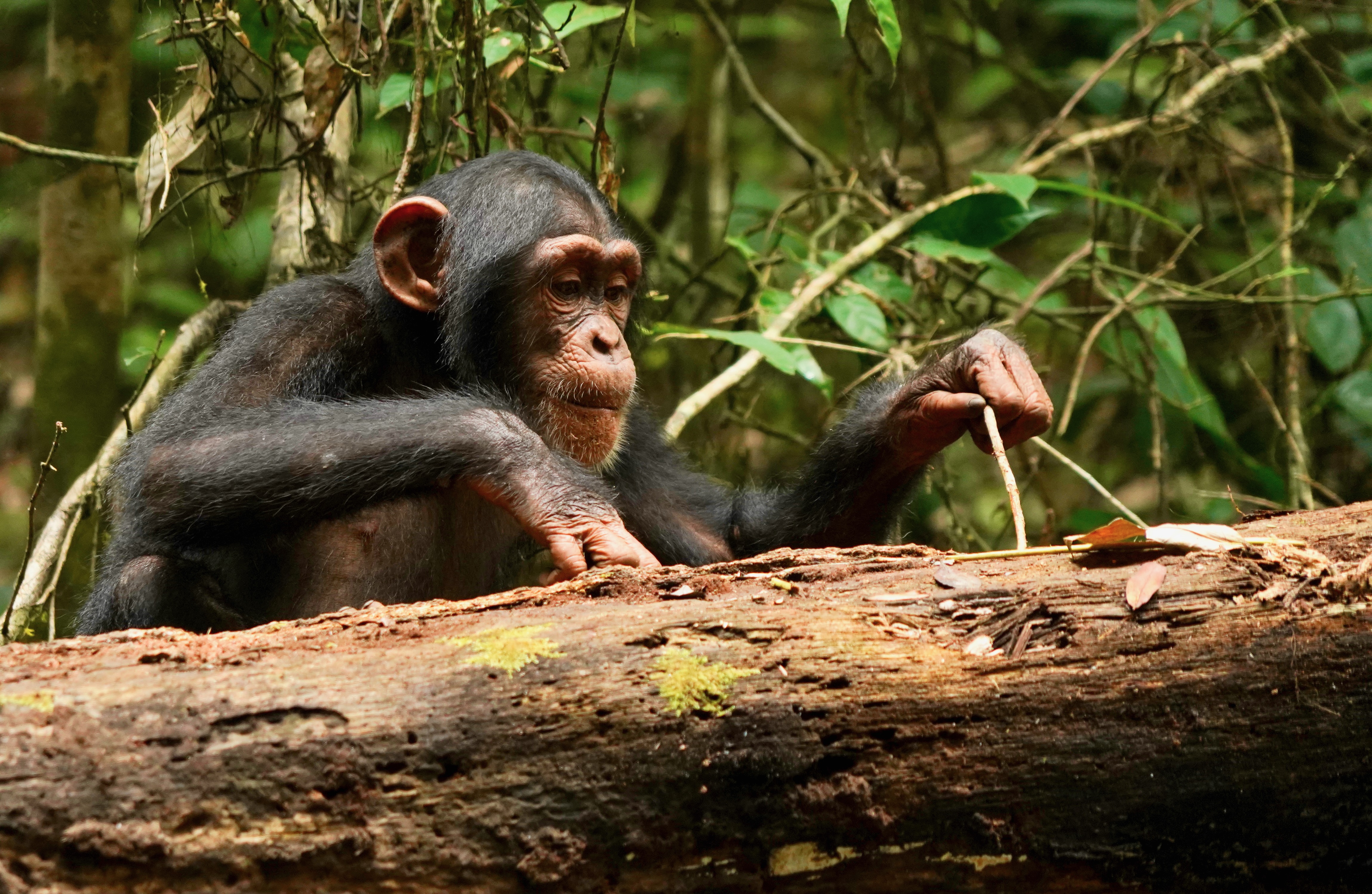Chimps May Continuously Learn as They Age, a Factor of Human Evolution
Posted on Categories Discover Magazine

Chimps know how to get a grip. What’s more, after they learn how to grasp objects, they show they can improve their hold and modify it for different tasks. This ability starts young and develops well into adulthood, according to observations published in PLOS Biology.
Chimps Experiment With Grips
For the recent study, scientists video-recorded 70 wild chimps of various ages using sticks to retrieve food over several years at Taï National Park, Côte d’Ivoire in Africa. Their intent was to see whether chimps share humans’ capacity for continuous learning. That ability has been hypothesized as a factor in human evolution.
In the study, Mathieu Malherbe of France’s Institute of Cognitive Sciences and colleagues examined whether chimpanzees share this feature. They found chimps hone their tool techniques as they age, by changing finger grips to better handle sticks. Some methods — like using sticks to reach insects in tight spots — weren’t mastered until about age 15.
Learning in chimps starts very young, according to Malherbe. “The earliest we have observed a chimp using a stick as a tool was a one-year-old individual trying to perform ant-dipping. He was not very precise in inserting the stick or in retrieving a fair amount of food but had already started learning next to his mother using a stick she had dropped.”
Read More: Understanding Our Closest Relatives in the Animal Kingdom
How Chimps Learn to Use Tools
Early on, the researchers saw signs that chimps experimented with different grips and motions to reach food. But the chimps refined these techniques over time.
“While they are able to use the different stick tool use techniques it takes them more than a decade to understand which grip, for which action, for which food,” Malherbe says.
Malherbe adds that further study is needed to understand more about the “how’s” of the chimp learning process. Scientists still don’t understand whether the chimps use reasoning or draw upon memory to improve their techniques. They’d also like to learn more about experience versus teaching.
Read More: How Similar Are Humans and Monkeys?
Do Chimpanzees Learn From Each Other?
Earlier studies hold some clues. For instance, researchers have seen examples of both trial-and-error and teaching while observing chimps cracking nuts. That task doesn’t involve tools, but it’s not a stretch to hypothesize they’d use some of those approaches to master stick use.
“Chimpanzees are cultural animals that use social learning to pass and maintain traits and behavior through generations and it would be interesting to investigate further when and how different learning mechanisms are used,” Malherbe says.
Some interactions can be harmful, though. Studies show that chimpanzee communities that live nearer to people have fewer cultural traits than those that live more remotely, suggesting a damaging effect of human-chimp proximity, likely because chimpanzee communities are disrupted.
Read More: Are Chimpanzees Capable of Empathy?
Article Sources
Our writers at Discovermagazine.com use peer-reviewed studies and high-quality sources for our articles, and our editors review for scientific accuracy and editorial standards. Review the sources used below for this article:
Before joining Discover Magazine, Paul spent over 20 years as a science journalist, specializing in U.S. life science policy and global scientific career issues. He began his career in newspapers, but switched to scientific magazines. His work has appeared in publications including Science News, Science, Nature, and Scientific American.